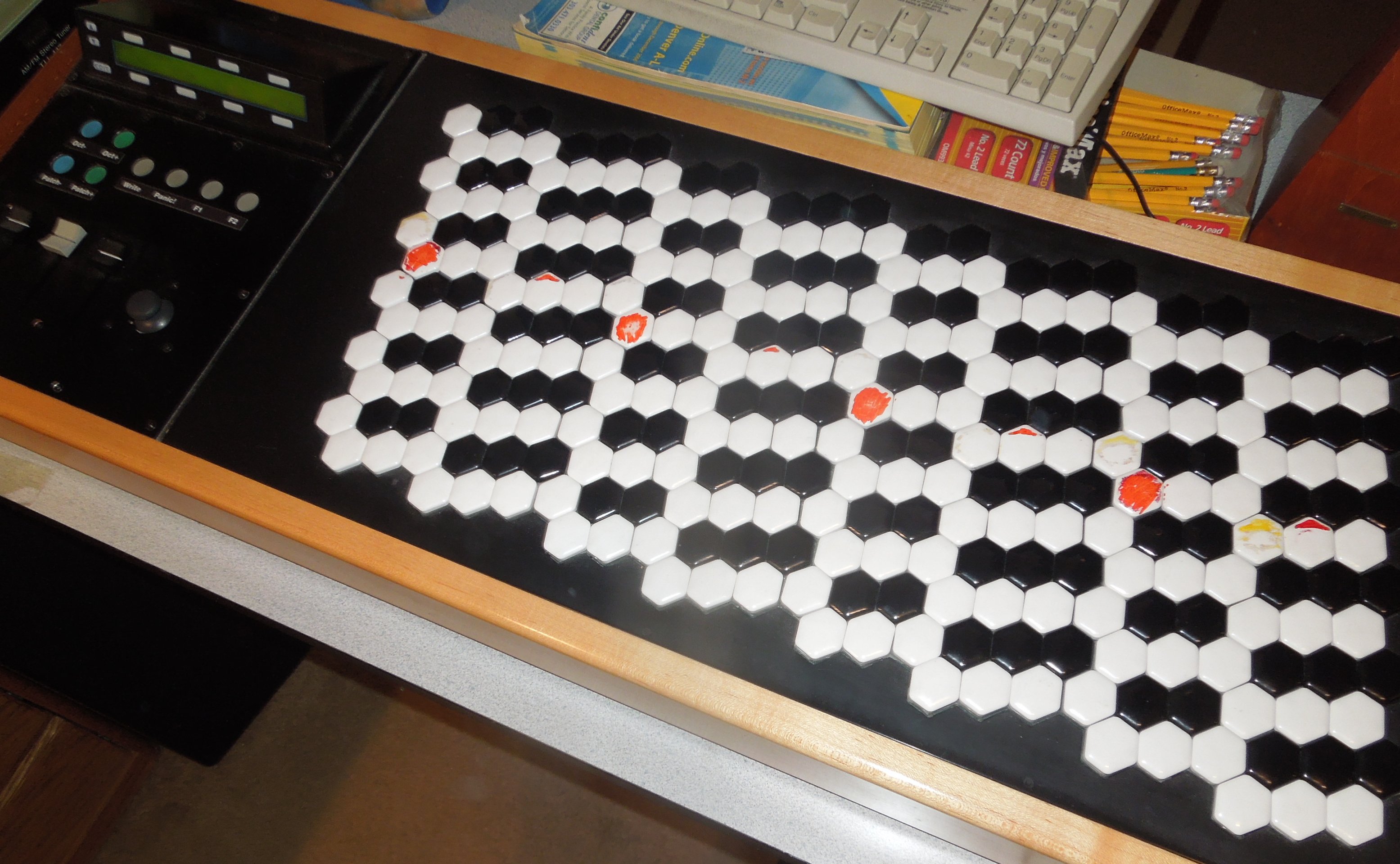Next Page: 3/4 – Diagramming Scales, Chords
The Skhisma and Keyboard Design
In this chapter, I talk about the rarely-used skhisma, an obscure 2-cent comma, which is useful mostly for notational purposes in 53-eq when the key changes require the use of Abbbb or other obscure notes.
I also discuss keyboard design and describe the technical aspects of setting up a 53-equal tuning system on your home computer. As a player of a generalized keyboard, I use five ranks of twelve keys each and tune them for my 53 notes (Figure 3-3). The sixth rank can be used for whatever else I may want, such as notes tuned in 100% pure just-intonation from C. I used the red Sharpee to make it easy to find the note C in the central functioning rank of this keyboard. Follow up from C to find a regular keyboard with seven white notes and five black notes, just like a piano. Then they are arranged in a honeycomb pattern so you will find two keyboard ranks above and two keyboard ranks below the central rank, giving me a total of 60 notes. Seven of these notes are enharmonic, and you can find them as skhismic enharmonic equivalents on the World Wide Musical Web.
My generalized keyboard
You don’t have to have a generalized keyboard to do this, however. Another possibility is to buy five identical keyboards, stack them carefully, and tune your computer program or instrument so that each keyboard has a different tuning. Let’s see how any keyboard set of this kind interacts with the WWMW. The central rank of twelve notes (with the usual seven white and five black keys) plays twelve Pythagorean notes of the central WWMW circle: F-C-G-D-A-E-B-F#-C#-G#-D#-A#. Follow those twelve notes on the WWMW and the next note you get is E#, which would play as F1, not F (voila, the Pythagorean comma!)….
If you would like to learn more about this chapter, “The Skhisma and Keyboard Design,” you can buy the entire book, The Grand Unified Theory of Music, in pdf form for $25 with hundreds of embedded musical examples of scales and chords from all over the world — and descriptions of how to set up a 53-equal system for composing and performing on computer and keyboard.
A free introduction to what The Grand Unified Theory of Music offers is on this website and includes both text and a few musical examples from each webpage. If you would like to learn more about this chapter and the full contents of this entire e-book, you can buy The Grand Unified Theory of Music for $25, with hundreds of embedded musical examples of scales and chords from all over the world — and ideas for how to set up your computer system —
HERE.
You’ll get a personalized password you can use to see the entire e-book. Inside the full book, you will also get a link to the complete pdf file of this e-book, which you can read on your Kindle or similar device. The links to the hundreds of mp3 sound files – the same ones you can hear on the website — will also be included. This is “Version 1.0” of The Grand Unified Theory of Music. Because it is an e-book, additions, corrections and improvements in the sound may be added at any time. The Grand Unified Theory of Music is Copyright © 2018 by Christopher Mohr. All rights reserved.
One person per password. Sharing this password with others is a violation of copyright. Do not allow others to use your password or link to the pdf file!


